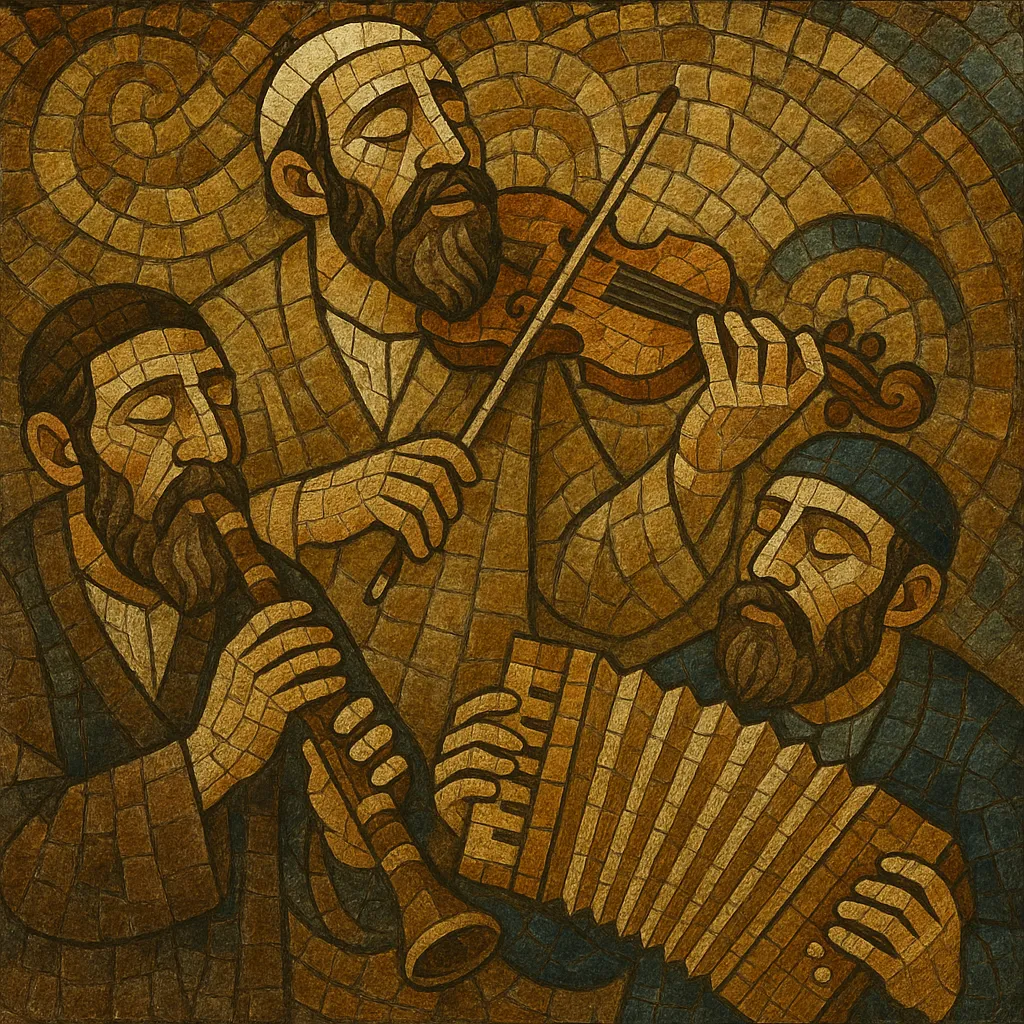Nigun is a Jewish devotional melody, most strongly associated with the Hasidic movement, that is sung without words and built from vocables (such as “yai-dai-dai,” “bim-bam,” or “oy-oy”). Repetition and gradual intensification are central: the same short phrase is cycled many times, gathering emotion, volume, and tempo as participants join.
Musically, nigunim are modal and often draw on Ashkenazi synagogue modes and Eastern European folk idioms. Common scales include Ahava Rabbah (Freygish/Phrygian dominant), Adonai Malakh (Mixolydian flavor), Misheberakh (major), and Mogen Ovos (minor). Rhythms range from slow, free-meter dveykus (adhesive/meditative) nigunim to lively dance forms in 2/4 or 3/4 suited to communal circle dances.
Nigun is primarily vocal and communal, but it can be supported instrumentally by fiddle/violin, clarinet, accordion, tsimbl (hammered dulcimer), and handclaps. Ornamentation (slides, sob-like krekhts, and sighing turns) reinforces its expressive, prayer-like character.
Nigun emerged within the Hasidic movement in the 1700s in Eastern Europe (notably regions of present-day Ukraine, Poland, Belarus, and Lithuania). Hasidic leaders emphasized heartfelt devotion (devekut), encouraging melodies without text so that intention (kavanah) could take precedence over verbal content. These tunes absorbed synagogue modes and the surrounding Slavic and Romani folk dance rhythms.
Across the 1800s, Hasidic dynasties cultivated distinct musical aesthetics. Chabad/Lubavitch prized contemplative, multi-part nigunim for farbrengens; Karlin-Stolin became known for intense, fast nigunim; and Modzitz developed elaborately structured, often through-composed melodies. Klezmer musicians interacted with these traditions, exchanging motifs, modes, and dance forms.
The devastation of European Jewry during the Holocaust endangered oral repertoires. Survivors and émigrés replanted nigun traditions in North America, Israel, and elsewhere. Recordings and transcriptions began to document tunes formerly transmitted aurally, while cantors and community choirs integrated nigunim into services and gatherings.
Shlomo Carlebach popularized participatory singing built on nigun-like refrains, influencing synagogue life and Jewish popular music. Later, artists and communal leaders (e.g., Ben Zion Shenker, Joey Weisenberg) revitalized congregational singing, workshops, and song circles. Contemporary ensembles draw on nigun for world-fusion settings, indie-folk textures, and concert repertoire, while Hasidic courts continue to compose and teach new nigunim.


